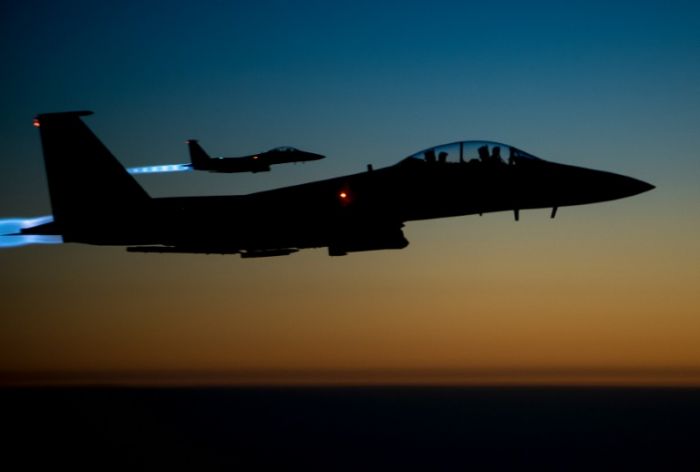-
Tips for becoming a good boxer - November 6, 2020
-
7 expert tips for making your hens night a memorable one - November 6, 2020
-
5 reasons to host your Christmas party on a cruise boat - November 6, 2020
-
What to do when you’re charged with a crime - November 6, 2020
-
Should you get one or multiple dogs? Here’s all you need to know - November 3, 2020
-
A Guide: How to Build Your Very Own Magic Mirror - February 14, 2019
-
Our Top Inspirational Baseball Stars - November 24, 2018
-
Five Tech Tools That Will Help You Turn Your Blog into a Business - November 24, 2018
-
How to Indulge on Vacation without Expanding Your Waist - November 9, 2018
-
5 Strategies for Businesses to Appeal to Today’s Increasingly Mobile-Crazed Customers - November 9, 2018
IS fighters killed in past two years: US general
Gen. MacFarland is completing a year as commander of the Combined Joint Task Force-Operation Inherent Resolve, the name the military has given the fight against Islamic State in Iraq and Syria.
Advertisement
Although the exact numbers were not known, estimates show only up to 25,000 IS fighters now remain in the region.
Lieutenant General Sean MacFarland, the outgoing commander of the US -led coalition fighting IS in Iraq and Syria, told a Pentagon press briefing on Wednesday that the number of IS fighters had fallen as a result of worldwide military efforts against the group, also known as “Daesh”.
MacFarland declined to give timeframes for coming offensives but said the campaign in Iraq was more advanced than the effort in Syria amid a civil war. “We don’t see them operating almost as effectively as they have in the past, which makes them even easier targets for us so as a result they’re attrition has accelerated here of late”.
Lt. Gen. Sean MacFarland said that both the quality and number of IS fighters is declining, and he warned that it is hard to determine accurate numbers.
He said once Mosul is “recaptured”, the enemy in Iraq will be reduced to “scattered pockets of resistance”.
President Barack Obama said himself last week that ISIS will continue to be a threat after it’s “inevitably” routed from its strongholds, highlighting the group’s ability to motivate “lone wolf” supporters to launch small-scale attacks that are harder to detect and prevent. “I am pleased with the progress that we’ve made on the ground in Iraq and Syria”.
ISIS’ roots can be traced back earlier, however, with the USA -led invasions of Iraq and Afghanistan in the 2000s prompting the rise of the Islamist, anti-Western terrorist group now known as Islamic State.
The first US airstrikes against ISIS took place a little over two years ago.
Speaking to reporters at the Pentagon, MacFarland declined to speculate about when the American-backed Iraqi forces will mount a full-scale invasion of the city, saying only that “we’re going to try to get Mosul back as fast as we can”.
A member of the Iraqi security forces holds an Iraqi national flag in Khalidiya, east of Ramadi, the capital of Anbar province, on August 1, 2016, during ongoing fighting against Daesh.
The ISF has subsequently liberated nearly a quarter of a million civilians in Iraq, he said, noting that stepped-up training was added to police training and recruiting travel forces, which added 5,000 trained local police and more than 20,000 tribal fighters enrolled.
Advertisement
“Military success in Iraq and Syria will not necessarily mean the end of Daesh”, he said, using an Arabic acronym for the Islamic State group.





























